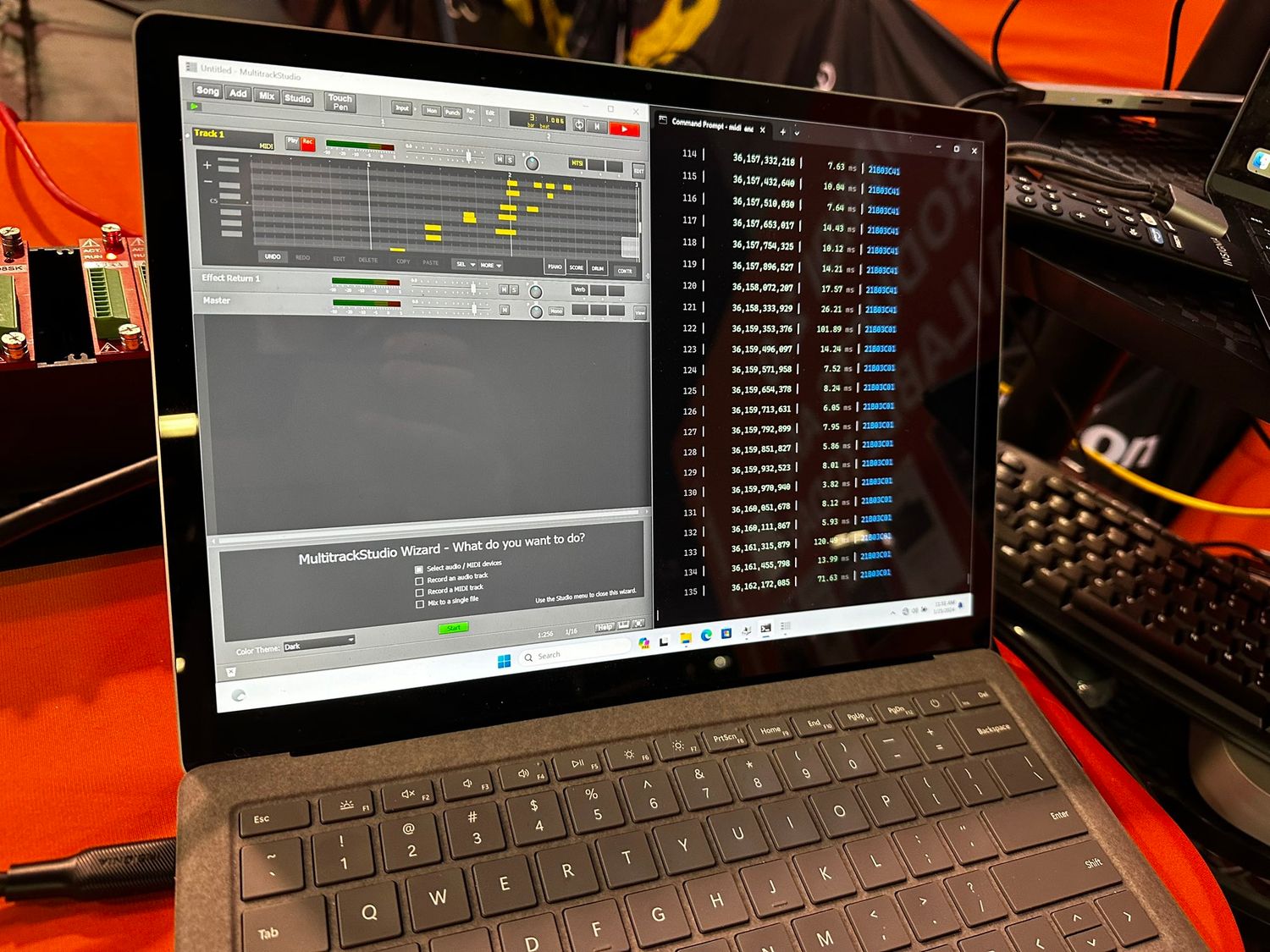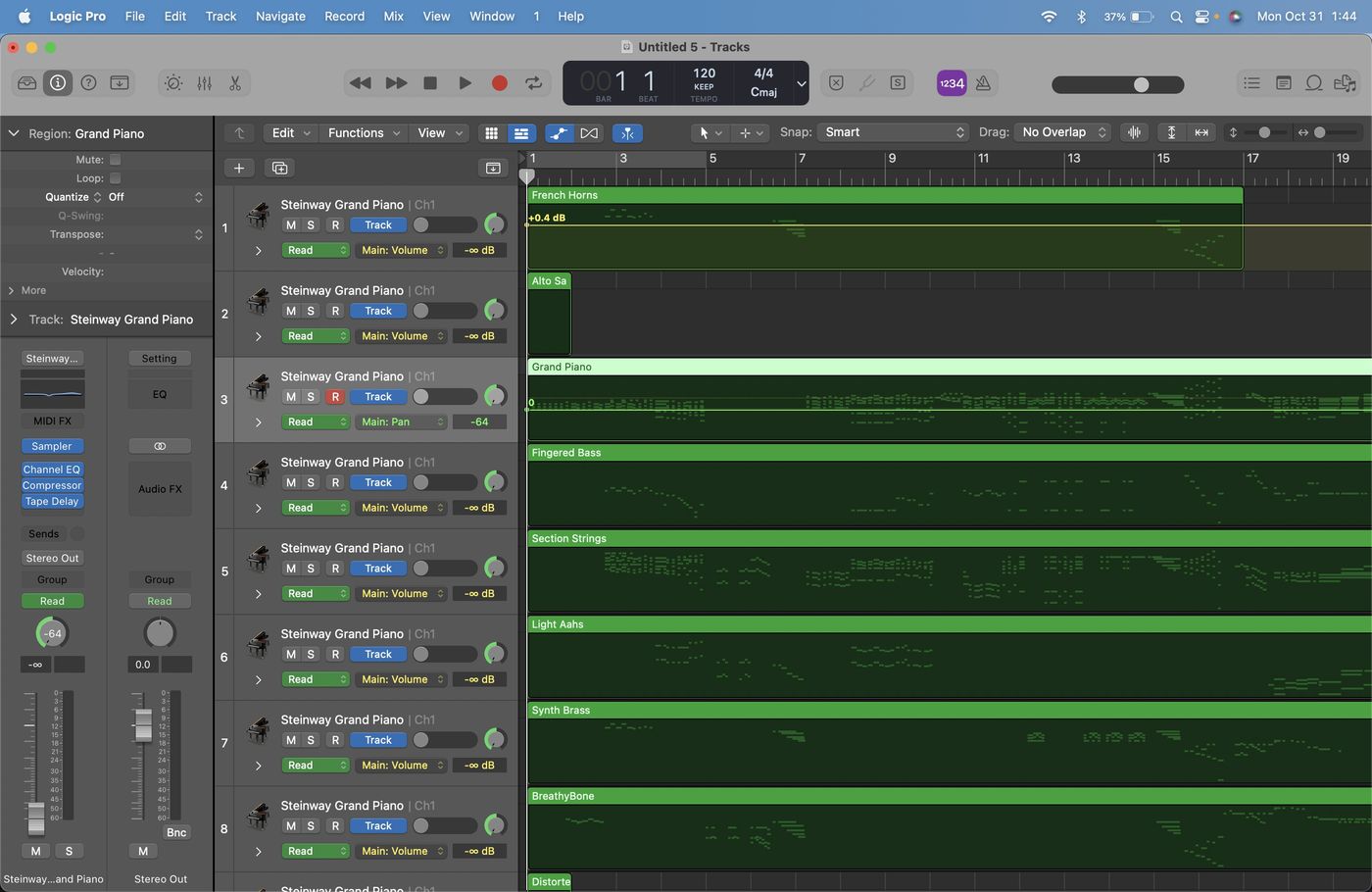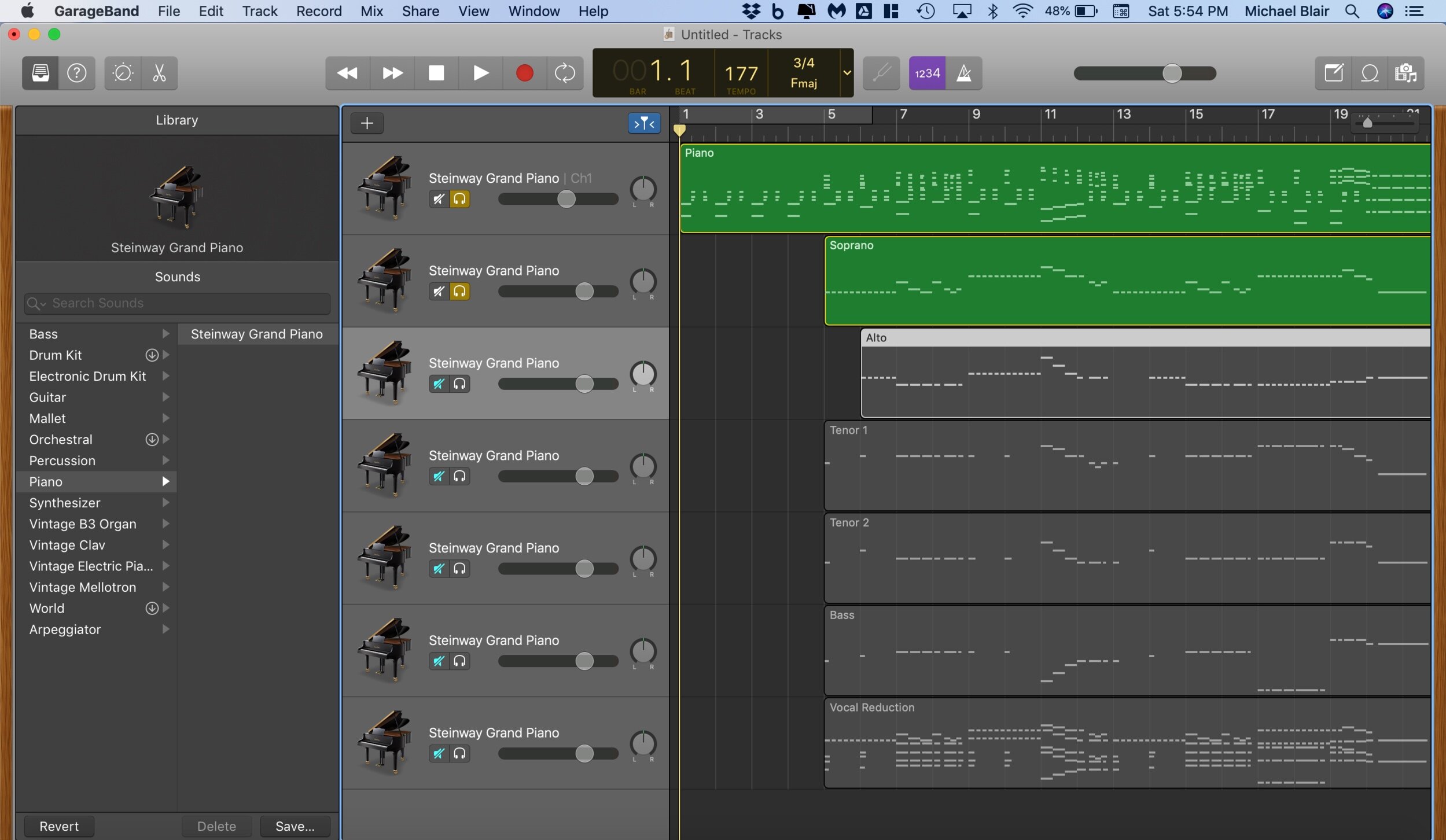Home>Production & Technology>MIDI>What Is MIDI File


MIDI
What Is MIDI File
Published: February 22, 2024
Learn about MIDI files, their uses, and how they work. Discover the benefits of MIDI for music production and electronic instruments.
(Many of the links in this article redirect to a specific reviewed product. Your purchase of these products through affiliate links helps to generate commission for AudioLover.com, at no extra cost. Learn more)
Table of Contents
Introduction
MIDI, which stands for Musical Instrument Digital Interface, is a versatile and widely used technology in the music industry. It has revolutionized the way music is created, recorded, and performed, offering musicians and producers a powerful tool for expressing their creativity. MIDI is not just a file format; it is a language that allows electronic musical instruments, computers, and other devices to communicate with each other.
MIDI has become an integral part of modern music production, enabling artists to compose, record, and manipulate music in ways that were previously unimaginable. Its influence extends beyond the studio, as MIDI technology has also transformed live performances, allowing musicians to trigger sounds, control lighting, and synchronize visuals with their music in real time.
The impact of MIDI is felt across various genres of music, from classical to electronic, pop to rock, and everything in between. Its flexibility and compatibility have made it a cornerstone of the digital music landscape, empowering musicians to explore new sonic territories and push the boundaries of creativity.
In this article, we will delve into the history of MIDI, explore how it works, discuss the different types of MIDI files, examine the uses of MIDI files, and weigh the advantages and disadvantages of this influential technology. By the end of this journey, you will gain a deeper understanding of MIDI and its pivotal role in shaping the modern music industry.
History of MIDI
The history of MIDI dates back to the early 1980s when the need for a universal communication protocol for electronic musical instruments became increasingly apparent. Prior to MIDI, different manufacturers utilized proprietary systems that were incompatible with one another, hindering the seamless integration of various musical devices. This lack of standardization posed significant challenges for musicians and producers, limiting their ability to synchronize and control multiple instruments effectively.
In response to this pressing issue, a group of visionary engineers and music industry leaders collaborated to develop a standardized protocol that would enable electronic musical instruments to communicate with each other and with computers. The result of their collective efforts was the creation of the Musical Instrument Digital Interface, or MIDI, in 1983.
MIDI was revolutionary in that it established a universal language for musical devices, allowing them to transmit and receive a wide range of musical information, including note-on and note-off commands, velocity, pitch, modulation, and more. This breakthrough not only facilitated seamless communication between different instruments and equipment but also paved the way for unprecedented levels of creativity and innovation in music production.
The adoption of MIDI quickly gained momentum, as it offered musicians and producers unparalleled flexibility and control over their musical compositions. This newfound interoperability allowed for the integration of keyboards, synthesizers, drum machines, and other MIDI-compatible devices into cohesive, synchronized setups, empowering artists to explore new sonic possibilities and expand their musical horizons.
Over the years, MIDI continued to evolve, with advancements in technology leading to enhanced capabilities and expanded functionality. The introduction of MIDI 1.0 laid the foundation for the widespread adoption of MIDI across the music industry, while subsequent developments, such as the introduction of General MIDI (GM) and MIDI 2.0, further solidified its position as a fundamental tool for music creation and performance.
Today, MIDI remains a cornerstone of modern music production, serving as a fundamental building block for electronic music, film scoring, live performances, and a myriad of other musical applications. Its enduring legacy is a testament to the profound impact it has had on the music industry, empowering artists to bring their creative visions to life and connect with audiences on a global scale.
How MIDI Works
MIDI operates on a remarkably straightforward principle: it transmits data about music in a digital format. Rather than transmitting audio signals, MIDI sends information about the notes, intensity, and duration of musical sounds. This data is then interpreted by MIDI-compatible devices, such as synthesizers, drum machines, and computers, which generate the corresponding sounds.
At its core, MIDI communication revolves around a set of digital messages that convey musical instructions. These messages encompass a diverse array of musical parameters, including note-on and note-off commands, pitch, velocity, modulation, and control changes. When a musician plays a MIDI-compatible instrument, such as a keyboard or electronic drum pad, the instrument generates MIDI data that represents the musical performance. This data is then transmitted via MIDI cables or wirelessly to other MIDI-enabled devices, where it is interpreted and translated into audible sound.
One of the key advantages of MIDI is its ability to separate musical performance from sound generation. This means that the musical information can be manipulated and modified independently of the actual sound production. For example, a MIDI sequence recorded on a keyboard can be played back using a different instrument sound, offering immense flexibility and creative potential. Additionally, MIDI data can be edited, rearranged, and manipulated in a digital audio workstation (DAW), allowing for precise control over every aspect of the musical composition.
MIDI also facilitates real-time communication between musical devices, enabling seamless synchronization and coordination. This is particularly evident in live performances, where MIDI technology empowers musicians to trigger sounds, control lighting, and synchronize visual effects in perfect harmony with the music. Furthermore, MIDI allows for the creation of intricate backing tracks and accompaniments, enhancing the depth and richness of live performances.
The versatility of MIDI extends beyond traditional musical instruments, encompassing a wide range of MIDI-compatible equipment, including lighting systems, stage effects, and audio processors. This interoperability enables seamless integration of various elements in live productions, offering a cohesive and immersive experience for both performers and audiences.
In essence, MIDI works by transmitting digital data that represents musical performance, allowing for the seamless communication and control of MIDI-compatible devices. Its versatility, flexibility, and real-time capabilities have transformed the landscape of music production and performance, empowering artists to unleash their creativity and bring their musical visions to life in unprecedented ways.
Types of MIDI Files
MIDI files come in various formats, each serving distinct purposes and offering unique capabilities. Understanding the different types of MIDI files is essential for navigating the diverse landscape of music production and ensuring compatibility with various devices and software. Let's explore the primary types of MIDI files and their characteristics:
-
Format 0 MIDI Files:
- Format 0 MIDI files are the most basic type of MIDI file, representing a single track of musical data. All the musical information, including notes, velocities, and timing, is contained within a single track. While format 0 files are efficient in terms of file size, they offer limited flexibility for editing and manipulation.
-
Format 1 MIDI Files:
- In contrast to format 0, format 1 MIDI files support multiple tracks, allowing for greater complexity and layering within a musical composition. Each track can represent a different instrument or musical element, providing enhanced versatility and control over the arrangement and production process.
-
Standard MIDI Files (SMF):
- Standard MIDI files encompass both format 0 and format 1 variations, offering a comprehensive and widely compatible format for storing musical data. SMF files are supported by a vast array of hardware and software platforms, making them a universal choice for sharing and distributing MIDI-based compositions.
-
General MIDI (GM) Files:
- General MIDI files adhere to a standardized set of instrument sounds and mapping, ensuring consistent playback across different devices and systems. GM files are particularly useful for creating music that can be accurately reproduced on a wide range of MIDI-compatible instruments and software.
-
MIDI Karaoke Files:
- MIDI karaoke files combine MIDI musical data with synchronized lyrics, enabling the creation of karaoke tracks that display lyrics in sync with the music. These files are commonly used in karaoke machines and software, allowing users to sing along to MIDI-based accompaniments with synchronized lyrics display.
-
MIDI Show Control (MSC) Files:
- MIDI Show Control files are designed for controlling and synchronizing multimedia elements in live performances and events. These files facilitate the integration of MIDI commands with lighting, audio, and visual systems, enabling precise and synchronized control over various production elements.
Understanding the characteristics and applications of these different types of MIDI files is crucial for leveraging the full potential of MIDI technology in music production, live performances, and multimedia integration. By selecting the appropriate MIDI file format for a given purpose, musicians and producers can optimize compatibility, flexibility, and creative possibilities in their musical endeavors.
Uses of MIDI Files
MIDI files serve a myriad of purposes across the music industry, offering unparalleled versatility and functionality in various creative endeavors. From music production to live performances, multimedia integration to educational applications, MIDI files play a pivotal role in shaping the way music is composed, recorded, and presented. Let's explore the diverse uses of MIDI files and their impact on different aspects of the music landscape.
Music Production and Composition
MIDI files are indispensable tools for music producers and composers, providing a flexible and efficient means of creating and arranging musical compositions. By utilizing MIDI files, musicians can craft intricate melodies, harmonies, and rhythms with precision and control. The ability to edit, rearrange, and manipulate MIDI data within a digital audio workstation (DAW) empowers artists to fine-tune every aspect of their musical creations, fostering a dynamic and iterative approach to composition.
Sound Design and Synthesis
In the realm of sound design and synthesis, MIDI files enable the manipulation and control of electronic musical instruments and synthesizers. Through MIDI commands, sound parameters such as pitch, velocity, modulation, and timbre can be modulated in real time, allowing for expressive and dynamic sonic explorations. This versatility makes MIDI files an essential tool for sculpting and shaping electronic sounds, from ethereal textures to powerful leads and basslines.
Live Performances
MIDI files play a central role in enhancing live performances, offering musicians the ability to trigger sounds, control backing tracks, and synchronize visual elements in real time. With MIDI technology, artists can seamlessly integrate electronic instruments, lighting systems, and stage effects, creating immersive and captivating live experiences for audiences. The flexibility and precision of MIDI files empower performers to deliver engaging and dynamic performances that transcend traditional boundaries.
Multimedia Integration
Beyond music, MIDI files are utilized for multimedia integration, facilitating the synchronization of audio, visual, and lighting elements in various productions. Whether in theater, film, or interactive installations, MIDI technology enables precise control and coordination of diverse multimedia components, enhancing the immersive and cohesive nature of the overall experience. From synchronized sound effects to dynamic lighting cues, MIDI files serve as a unifying language for seamlessly integrating multiple artistic elements.
Educational Applications
MIDI files are valuable educational resources, providing aspiring musicians and students with interactive learning tools and resources. Through MIDI-based tutorials, interactive music software, and educational games, learners can engage with musical concepts, theory, and performance in an interactive and dynamic manner. MIDI files offer a hands-on approach to music education, fostering creativity and exploration while imparting fundamental principles of music theory and composition.
In essence, MIDI files are versatile and indispensable assets that permeate every facet of the music industry. Their impact extends beyond traditional music production, influencing live performances, multimedia integration, sound design, and educational initiatives. As MIDI technology continues to evolve, its uses will undoubtedly expand, further enriching the creative landscape and empowering artists to push the boundaries of musical expression.
Advantages and Disadvantages of MIDI Files
MIDI files offer a wide array of advantages that have solidified their position as a fundamental tool in music production and performance. At the same time, certain limitations and challenges are inherent to MIDI technology. Understanding the advantages and disadvantages of MIDI files is essential for leveraging this powerful tool effectively and navigating its potential constraints.
Advantages
Versatility and Flexibility
One of the primary advantages of MIDI files is their unparalleled versatility and flexibility. MIDI data can be edited, rearranged, and manipulated with precision, empowering musicians and producers to craft intricate compositions and arrangements. The separation of musical performance from sound generation allows for the seamless interchange of instrument sounds, enabling artists to explore diverse sonic landscapes without re-recording performances.
Compact File Size
MIDI files are remarkably compact compared to audio recordings, making them efficient for storage, sharing, and distribution. This compactness allows for the creation of elaborate musical compositions without consuming significant storage space, making MIDI an ideal format for electronic music production and digital distribution.
Real-Time Control and Synchronization
MIDI technology enables real-time control and synchronization of musical elements, lighting, and visual effects in live performances. Musicians can trigger sounds, adjust parameters, and synchronize multimedia elements seamlessly, enhancing the dynamic and immersive nature of live shows. This real-time control empowers performers to deliver captivating and interactive experiences for audiences.
Interoperability
MIDI files are compatible with a vast array of hardware and software platforms, fostering interoperability and seamless integration across different musical devices and systems. This universal compatibility ensures that MIDI-based compositions can be accurately reproduced and manipulated on a wide range of MIDI-compatible instruments and equipment, offering consistent playback and control.
Disadvantages
Lack of Audio Information
One of the primary limitations of MIDI files is the absence of actual audio information. MIDI data represents musical instructions rather than sound itself, requiring MIDI-compatible devices to interpret and generate the corresponding audio. As a result, the quality and timbre of the sound are dependent on the capabilities of the playback device, potentially leading to variations in sound reproduction.
Complexity of Sound Reproduction
Achieving high-quality sound reproduction from MIDI files can be complex, as it relies on the capabilities of the playback device and the quality of instrument sounds. The nuances and expressiveness of acoustic instruments may not always be faithfully captured in MIDI-based performances, requiring careful attention to sound design and synthesis to achieve desired sonic results.
Editing and Programming Complexity
While MIDI offers extensive control over musical data, the intricacies of editing and programming MIDI sequences can be daunting for beginners. Understanding MIDI commands, event processing, and parameter modulation requires a learning curve, making it essential for users to familiarize themselves with MIDI editing tools and techniques to leverage its full potential.
Dependence on Playback Devices
MIDI files are reliant on MIDI-compatible devices for sound generation, which can lead to variations in sound reproduction across different playback systems. The quality and fidelity of sound output are contingent on the capabilities and sound libraries of the playback devices, necessitating careful consideration of sound source selection and sound module compatibility.
In summary, MIDI files offer unparalleled versatility, real-time control, and compactness, making them indispensable tools for music production and live performances. However, the absence of audio information and complexities related to sound reproduction and editing impose certain limitations on MIDI technology. By understanding and navigating these advantages and disadvantages, musicians and producers can harness the full potential of MIDI files while addressing potential challenges effectively.
Conclusion
In conclusion, MIDI files have played a transformative role in the music industry, revolutionizing the way music is composed, produced, and performed. From their humble beginnings in the early 1980s to their pervasive presence in modern music production, MIDI files have empowered musicians, producers, and performers to explore new frontiers of creativity and innovation.
The history of MIDI is a testament to the collaborative spirit of the music industry, as visionary engineers and industry leaders joined forces to address the pressing need for a universal communication protocol for electronic musical instruments. The development of MIDI laid the foundation for a standardized language that transcended the barriers of proprietary systems, enabling seamless communication and interoperability between diverse musical devices.
The versatility and flexibility of MIDI technology have reshaped the landscape of music production, offering musicians and producers unparalleled control over musical compositions. The ability to edit, rearrange, and manipulate MIDI data within digital audio workstations (DAWs) has fostered a dynamic and iterative approach to music creation, empowering artists to craft intricate melodies, harmonies, and rhythms with precision.
In live performances, MIDI technology has facilitated real-time control and synchronization of musical elements, lighting, and visual effects, enhancing the immersive and captivating nature of live shows. Musicians have leveraged MIDI files to trigger sounds, control backing tracks, and synchronize multimedia elements seamlessly, delivering engaging and dynamic performances that transcend traditional boundaries.
The uses of MIDI files extend beyond music production, encompassing sound design, multimedia integration, and educational applications. MIDI files serve as invaluable tools for sculpting electronic sounds, synchronizing audiovisual elements, and providing interactive learning experiences for aspiring musicians and students.
While MIDI files offer a myriad of advantages, including versatility, compactness, and real-time control, they also present certain challenges related to sound reproduction, editing complexity, and dependence on playback devices. By understanding and navigating these advantages and disadvantages, musicians and producers can harness the full potential of MIDI files while addressing potential constraints effectively.
As MIDI technology continues to evolve, its impact on the music industry will undoubtedly expand, further enriching the creative landscape and empowering artists to push the boundaries of musical expression. The enduring legacy of MIDI files serves as a testament to their profound influence on music, inspiring generations of musicians and shaping the sonic tapestry of the modern era.











